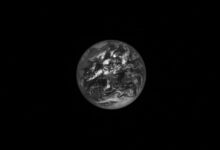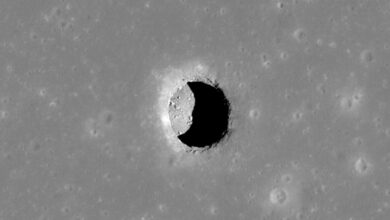
A newly discovered comet could only be the second intersteller object scientists have found after ‘Oumuamua.
The new comet – designated C/2019 Q4 (Borisov) – appears to have originated from outside the solar system, but it has not yet been officially confirmed, NASA said on Thursday.
The object – designated C/2019 Q4 (Borisov) – was discovered on August 30, 2019, by astronomer Gennady Borisov at the MARGO observatory in Nauchnij, Crimea.
The first intersteller object, ‘Oumuamua, was observed and confirmed in October 2017.
The new comet, C/2019 Q4, is still inbound toward the Sun, but it will remain farther than the orbit of Mars and will approach no closer to Earth than about 300 million kilometres.
After the initial detections of the comet, Scout system, which is located at NASA’s Jet Propulsion Laboratory in Pasadena, California, automatically flagged the object as possibly being interstellar.
Davide Farnocchia of NASA’s Center for Near-Earth Object Studies at JPL worked with astronomers and the European Space Agency’s Near-Earth Object Coordination Center in Frascati, Italy, to obtain additional observations.
He then worked with the NASA-sponsored Minor Planet Center in Cambridge, Massachusetts, to estimate the comet’s precise trajectory and determine whether it originated within our solar system or came from elsewhere in the galaxy.
The comet is currently 420 million km from the Sun and will reach its closest point, or perihelion, on December 8, 2019, at a distance of about 300 million km.
“The comet’s current velocity is high, about 150,000 kph, which is well above the typical velocities of objects orbiting the Sun at that distance,” said Farnocchia.
“The high velocity indicates not only that the object likely originated from outside our solar system, but also that it will leave and head back to interstellar space.”
Currently on an inbound trajectory, comet C/2019 Q4 is heading toward the inner solar system.
On October 26, it will pass through the ecliptic plane – the plane in which Earth and the other planets orbit the Sun – from above at roughly a 40-degree angle, NASA said.















